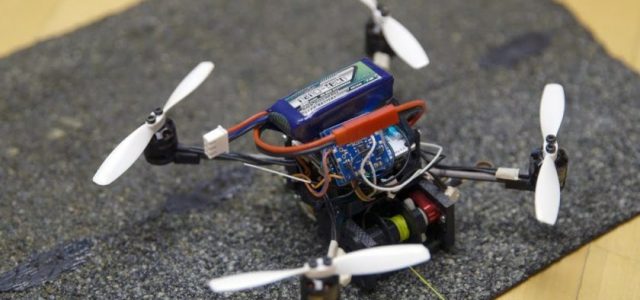Just like insects, these tiny quadcopters can move payloads of up to 40 times their weight! By perching and using winches, the FlyCroTugs can move much larger objects. The video shows two FlyCroTugs working together to open a door. One quad even winches a water bottle.The FlyCroTugs can hold on to surfaces using “gecko grippers,” inspired by the lizards and developed by Stanford to grip objects without applying excessing pressure. Experts from Stanford and the École Polytechnique Fédérale de Lausanne in Switzerland have been working on the FlyCroTugs, which are themselves inspired by wasps.
A paper on the flying robots was published in Science Robotics.“Wasps can fly rapidly to a piece of food, and then if the thing’s too heavy to take off with, they drag it along the ground, so this was sort of the beginning inspiration for the approach we took,” noted co-author Mark Cutkosky, the Fletcher Jones Chair in the School of Engineering at Stanford University.
Experts say that the FlyCroTugs could be useful for navigating small spaces in search and rescue missions. The robots could, for example, transport water bottles or cameras.
“Holding tightly to surfaces as they tug, the tiny robots could potentially move pieces of debris or position a camera to evaluate a treacherous area,” according to Stanford’s statement.Researchers have already used a FlyCroTug to fly a camera to the top of a crumbling structure and look inside.
“When you’re a small robot, the world is full of large obstacles,” said Matthew Estrada, a graduate student at Stanford and the paper’s lead author, in a statement. “Combining the aerodynamic forces of our aerial vehicle along with interaction forces that we generate with the attachment mechanisms resulted in something that was very mobile, very forceful and micro as well.”



















